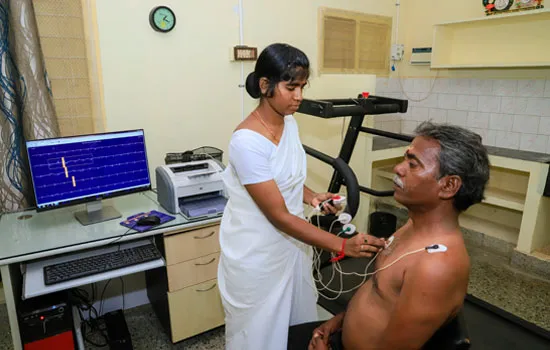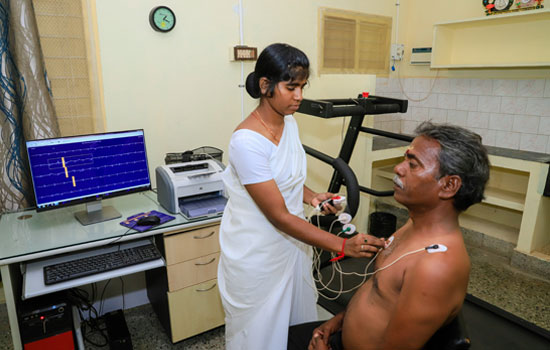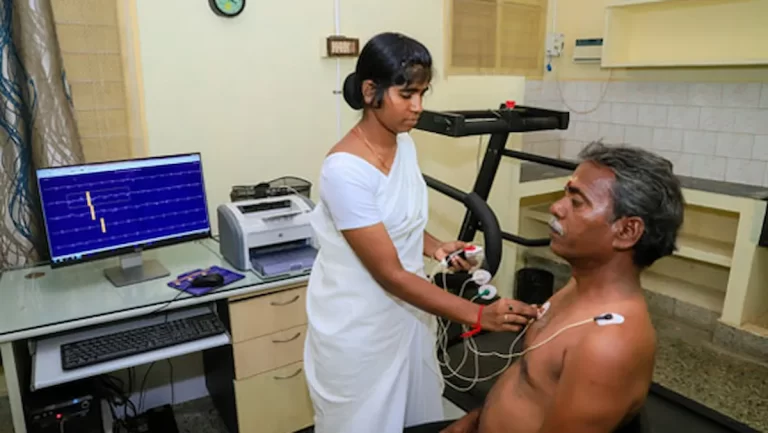A Holter monitor is a small, wearable device that records heart rhythm. Generally, the device is attached for 24-48 hours. During the time of monitoring, the device records all of your heartbeats.Doctor uses information captured on the Holter monitor to figure out if your heart is beating too fast or too slow have a heart rhythm problem.

Why it’s done?
If you experience your heart beating fast or irregularly (arrhythmia) or unexplained fainting, (loss of consciousness), your doctor may order a test called an ECG. As the ECG records your heart rhythm only for a short time it does not pick up heart rhythm problems. If your complaintssuggest that an occasionally irregular heart rhythm may be causing your condition, your doctor may recommend that you wear a Holter monitor for a day or so. The Holter might detect irregularities in your heart rhythm that an electrocardiogram couldn’t detect. Holter is also indicated if you have a heart condition that increases your risk of an abnormal heart rhythm(Hypertrophic cardiomyopathy).

Risks
There is no significant riskapart from rare discomfort or skin irritation at the contact of electrodes. Water will damage the instrument, hence bathing and swimming should be avoided. Also,metal detectors, magnets, microwave ovens, electric blankets, and electric razors and toothbrushes should be avoided while wearing as these devices can interrupt the signal from the electrodes to the Holter monitor. Also,cellphones and portable music players should be kept at least 6 inches from the monitor for the same reason.
How you prepare
If your doctor recommends Holter monitoring, you’ll have the device placed during a scheduled appointment. Unless your doctor tells you otherwise, plan to bathe before this appointment. Most monitors can’t be removed and must be kept dry once monitoring begins.
A technician will place electrodes that sense your heartbeat on your chest. These electrodes are about the size of a silver dollar. For men, a small amount of hair may be shaved to make sure the electrodes stick.
The technician will then connect the electrode to a recording device with several wires and will instruct you on how to properly wear the recording device so that it can record data transmitted from the electrodes. The recording device is about the size of a deck of cards.
You’ll be instructed to keep a diary of all the activities you do while wearing the monitor. It’s particularly important to record in the diary any symptoms of palpitations, skipped heartbeats, shortness of breath, chest pain or lightheadedness. You’ll usually be given a form to help you record your activities and any symptoms.
Once your monitor is fitted and you’ve received instructions on how to wear it, you can leave your doctor’s office and resume your normal activities.
After the procedure
Once your monitoring period is over, you’ll return the device to your doctor’s office, along with the diary you kept while you wore the Holter monitor. Your doctor will compare the data from the recorder and the activities and symptoms you wrote down.

